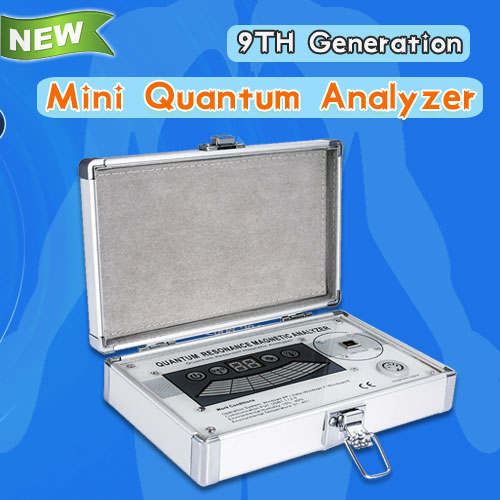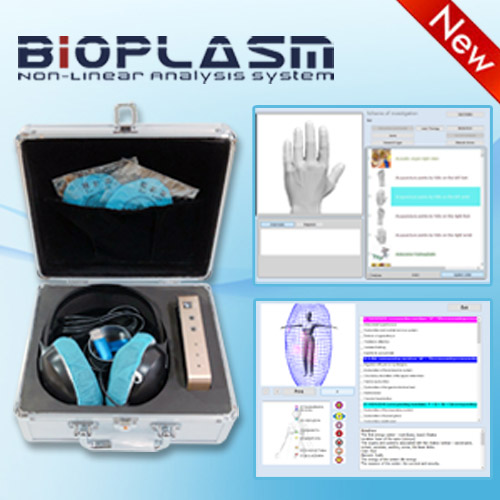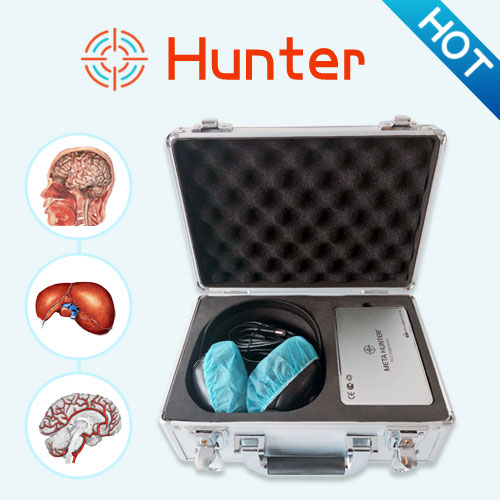Combined NLS-examination By Metatron 4025 Hunter And Magnetic Resonance Imaging For Soft Tissues Sarcomas
Role and place of hardware methods of soft tissues tumors study became more important after extended introduction of NLS and MRI into clinical practice. At the same time these soft tissues tumors study methods face the following objectives:
1) detection of tumor;
2) identification (differential diagnostics) of tumor;
3) identifying of disease stage.
Three-dimensional NLS-examination by Metatron 4025 Hunter together with REA allows us to detect presence of tumor, its size and structure with high precision. In evaluation of local spreading of soft tissues sarcomas information value of MRI and NLS is almost equal. Advantage of NLS-research is feature of differentiation of solid and cystic tumors when it is used together with REA, which is especially important in cases of myxomas or mixoma-like neoplasms, which may be incorrectly interpreted as cysts due to high content of water by CT or MRI. Besides, NLS-research makes possible to identify tumor area optimal for puncture biopsy (to differentiate hyperchromic solid area from necrosis). Another one advantage of NLS-research is monitoring of patient after surgical intervention and after chemotherapy.
MRI is generally acknowledged and the most efficient method of soft tissues affection diagnostics, because it fulfils all three abovementioned objectives of soft tissues study with high precision. Combined evaluation of the most important MRI criteria of tumor examination (size, outlines, homogeneity, intensity of signal) allows us to forecast malignization in 82% – 96% of cases. Together with high sensitivity of MRI in study of soft tissues tumors, its specificity is rather low. Approximate histological diagnosis may be found in 25% – 50% of cases (in 65% – 80% of cases when we apply NLS-research together with REA).
In interpretation of MRI-picture the most important indicator is intensity of MR-signal from tumor. In case of various tumors of soft tissues, we can see at MRI-pictures typical appearance of nidi and foci of changed MR-signals, and according to their intensity and homogeneity (or heterogeneity) together with localization, form, structure and outlines of neoplasm and condition of surrounding tissues we may decide if pathology character is malignant or benign, its staging, and in some cases – approximately identify histological belonging of tumor.
One of the main criteria of tumor differential diagnostics is evaluation of neoplasm blood supply. MRI is highly information valuable detection method of tumor vascularization, character and type of neogenic vessels. Study of soft tissues tumor vascularization in majority of cases detected neogenic vessels mainly in peripheral areas of tumor or so-called combined type of vascularization (vessels both in peripheral areas and in center of neoplasm).
Neovascular vessels differ from normal ones by uneven diameter, sinuation, branching and presence of numerous arteriovenous shunts.
Therefore, acquired data allows us to conclude that both MRI and NLS-research have high information value in examination of patients suffering from tumors of soft tissues. But when NLS-research is efficient screening method of diagnostics, MRI data is quite pathognomonic for such tumors and displays their morphogenesis. Combined examination with application of NLS, MRI and MRA makes possible to solve many concrete problems of soft tissues tumors diagnostics: identify localization, form, size, structure, volume and local spreading of tumor, evaluate signs of malignancy, vascularization of neoplasm, its relation to large vessels and bone structures, which is the main criterion for choosing of treatment tactics.
This article is provide from [Metatron 4025 hunter],please indicate the source address reprinted:http://www.healthycarer.com/news/nls-knowledge/1504.html






